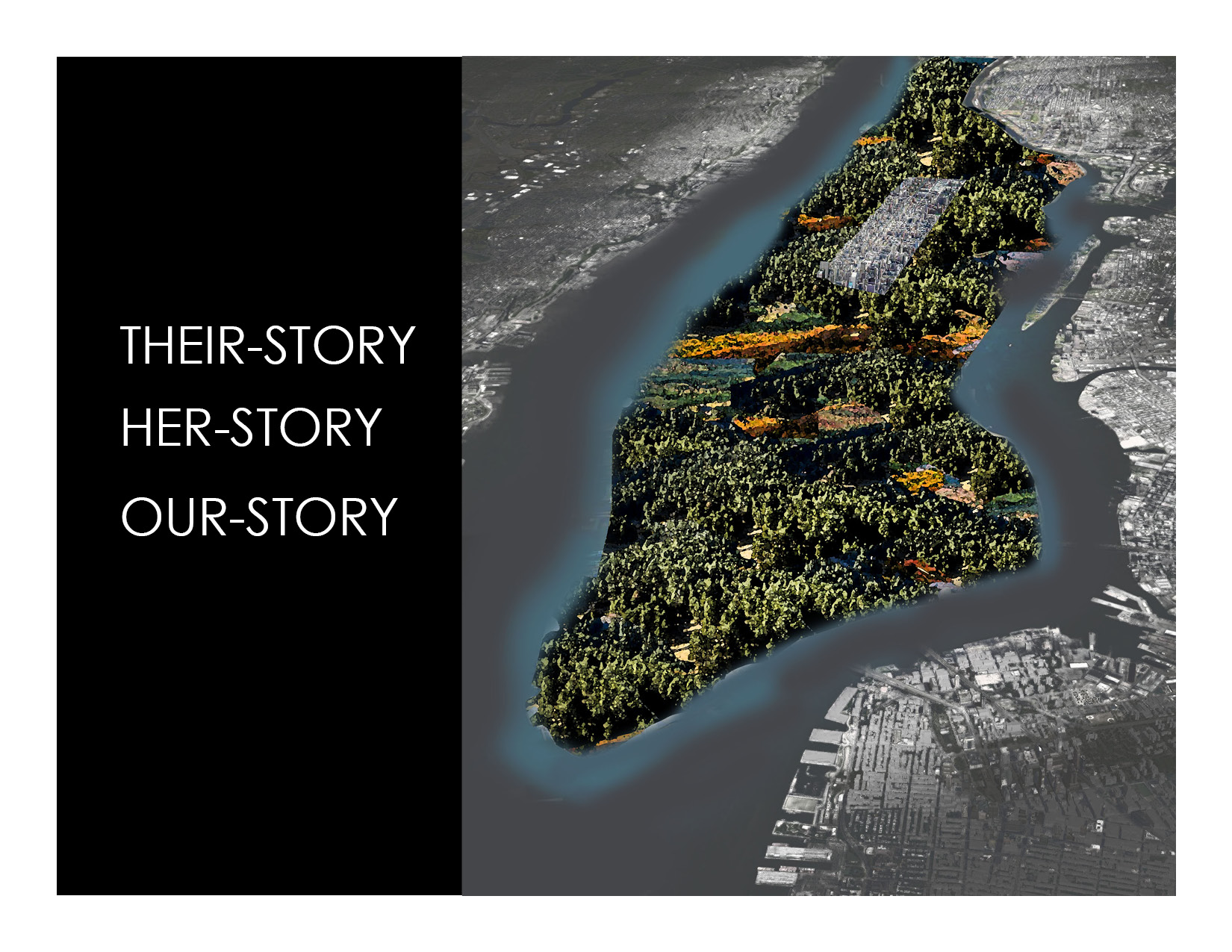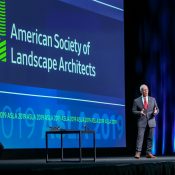Author: Elyana Javaheri
SENECA VILLAGE and CENTRAL PARK: The Forgotten Land of the Free
A few weeks ago, when we were all shaken awake by the Black Lives Matter movement, Black landscapes and our treatment of them as landscape architects began to occupy my mind. The very fact that it should have to take a movement of this magnitude for this topic to occupy some of our minds as designers is an issue that requires attention. I like to think that as landscape architects we have a unique role of protecting and preserving the stories and existence of those who have come before us. By genuinely understanding the culture, politics, and lives of a given community we are designing for, we get to use our skills of design and storytelling, and take part in highlighting a group of individuals and their lives on the lands that we inherit and get the opportunity to creatively. To be an active participant in what we were learning individually, I began conversations on this topic and similar issues on the Awescapes page. Received with great enthusiasm and feedback, the conversation lent itself to a survey, an extended conversation on race and landscape architecture, and the Ideas Pinup. The intention of the Ideas Pinup has been to take what we, as landscape designers and architects, are learning and unlearning about and being active participants in relearning and reshaping our design approach, with hopes that moving into the future we are more aware of our design decisions and their impacts on future generations.
It’s no small task once you begin to look at the sites we design through the lens of honoring and storytelling, yet we often don’t dedicate or have the time, the client, or the drive to be able to dive into the history of lands that we draw on. As a result, many people who have once walked on those lands are forgotten and their stories disappear into thin air. Black landscapes are important because they give us a glimpse into the stories of Black Lives that Matter, Black Lives that need to be protected, and Black Lives that have and continue to contribute so much to the American existence, culture, politics, and livelihood.
To better understand how we, as a field, are currently doing in this aspect, and how we can improve our ways going into the future, I began to look into the past, to get a sense of how landscape architecture has served historically Black landscapes and spaces. I began to realize that we often do not speak about historically Black lands, whether in our classrooms, in our conferences, or just topics of discussion, but I specifically began to wonder how many landscape architects and designers were aware of or had been educated on Seneca Village, since most everyone learns about Central Park at the very beginning of their landscape architecture education.
Conducting a short survey on Awescapes quickly revealed that from 55 participants, only 60% had heard about Seneca Village, and only 23% of them had learned through their education (77% had learned through personal research, available in the highlights section of Awescapes on Instagram). This showcases that while almost everyone within landscape architecture in America knows about Central Park, its design elements, and Fredrick Law Olmsted, in great detail, only 60% know that to create Central Park as it stands today, the first freed African American settlement, Seneca Village, at about 225 residents, was destroyed through eminent domain.
SENECA VILLAGE
If you are unfamiliar with Seneca Village, here is a quick recap: Seneca Village was the first prominent community of African American property owners in Manhattan, with a population of roughly 225 people, two-thirds of which were the first freed African Americans. The Village, existing between 1825 and 1857, stretched from 82nd to 89th street in Upper Westside, was then taken from its residents through eminent domain to create Central Park as we know and love today.
As explained by the Central Park Conservancy, “to a modern-day visitor, the site of Seneca Village resembles much of the surrounding Park, with rolling hills, rock outcrops, and playgrounds. But what many do not realize is that this area near the Park’s West 85th Street entrance has an important history. During the first half of the 19th century, it was home to Seneca Village, a community of predominantly African-Americans, many of whom owned property.” What stands out to me most about this statement is the identification that the site of Seneca Village and its significant and rich history, yet it resembles much of the surround park, as though it’s just another few acres. In 2019, as a result of activism by nonprofit organizations to recognize Seneca Village, the Conservancy installed a temporary sign that “shares the decades of research about Seneca Village and allows visitors to discover the community in the places where they actually lived.”
IDEAS PINUP
The Black Lives Matter movement taught us quickly that we must continue to learn and unlearn in order to make progress and create a better and more just future. I believe the same can and should be applied to our design thinking and approach to understand and designing sites. To be an active participant in that process within our field, the Ideas Pinup: Seneca Village invited everyone to come up with design solutions to what is a design problem. Seneca Village could have been saved, African Americans who owned land in the Village could have been thriving in their lands for the decades to come. Even now, only a few years ago when areas within original Seneca Village boundary went through a redesign, it should have begun to at least take active storytelling into consideration, but unfortunately it didn’t.
To take words into actions, landscape designers and architects submitted design ideas and elaborations exploring ways that the Park could have been designed differently, how to redesign it as a healing space, complete reconfiguration of the Park, understanding public memory, and series of installations to remind visitors of the Village and its stories. Here is a look into the diverse ideas that expand on how we could have or can still honor Seneca Village through design thinking and active participation, please see full submissions by all participants here.
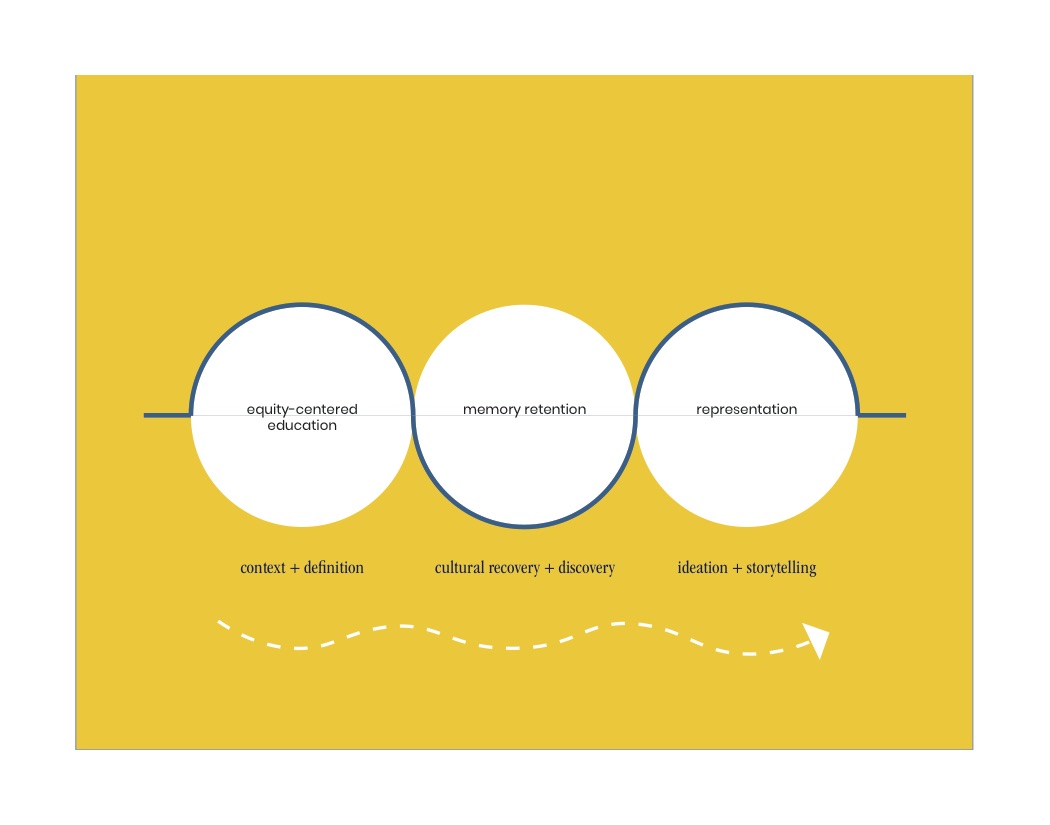

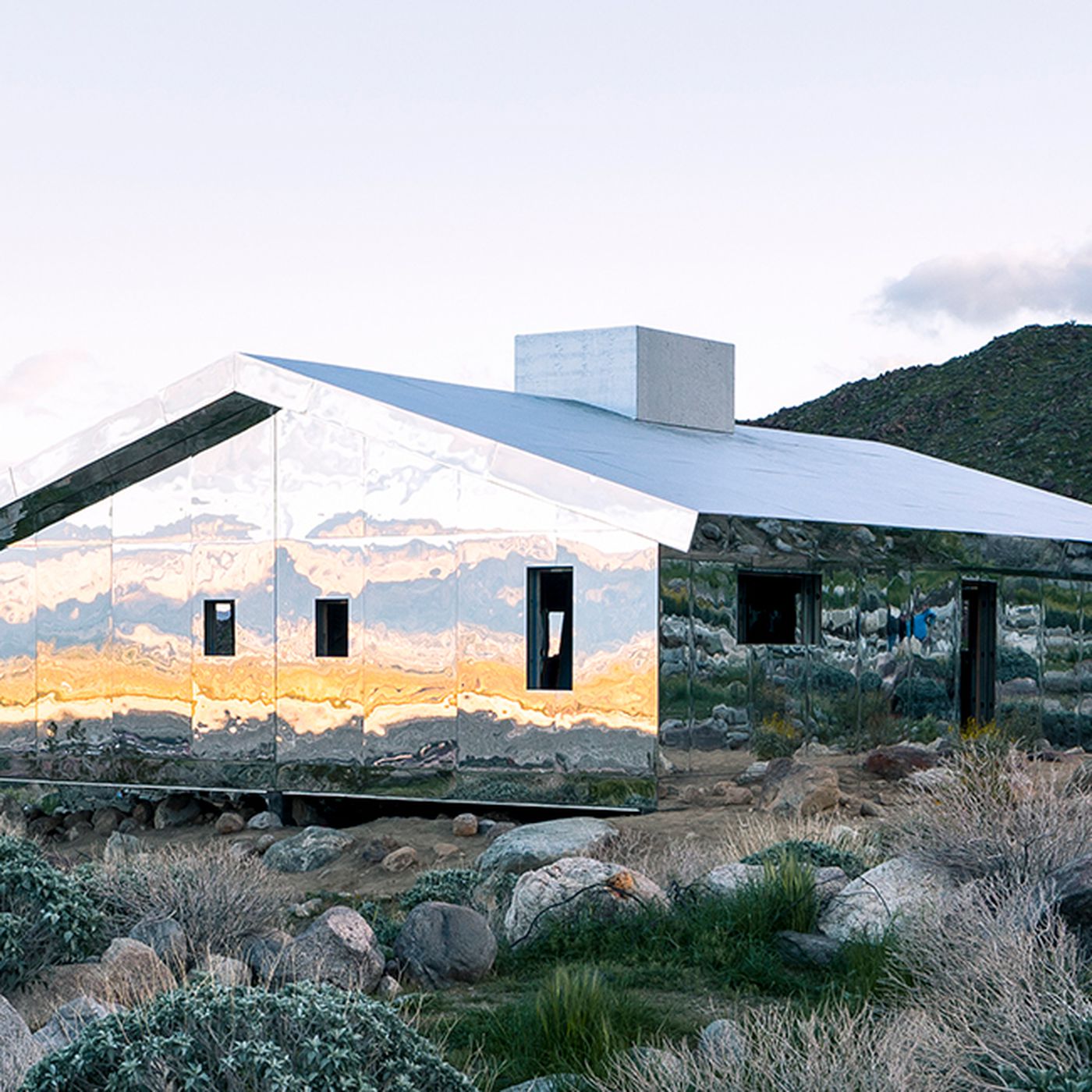
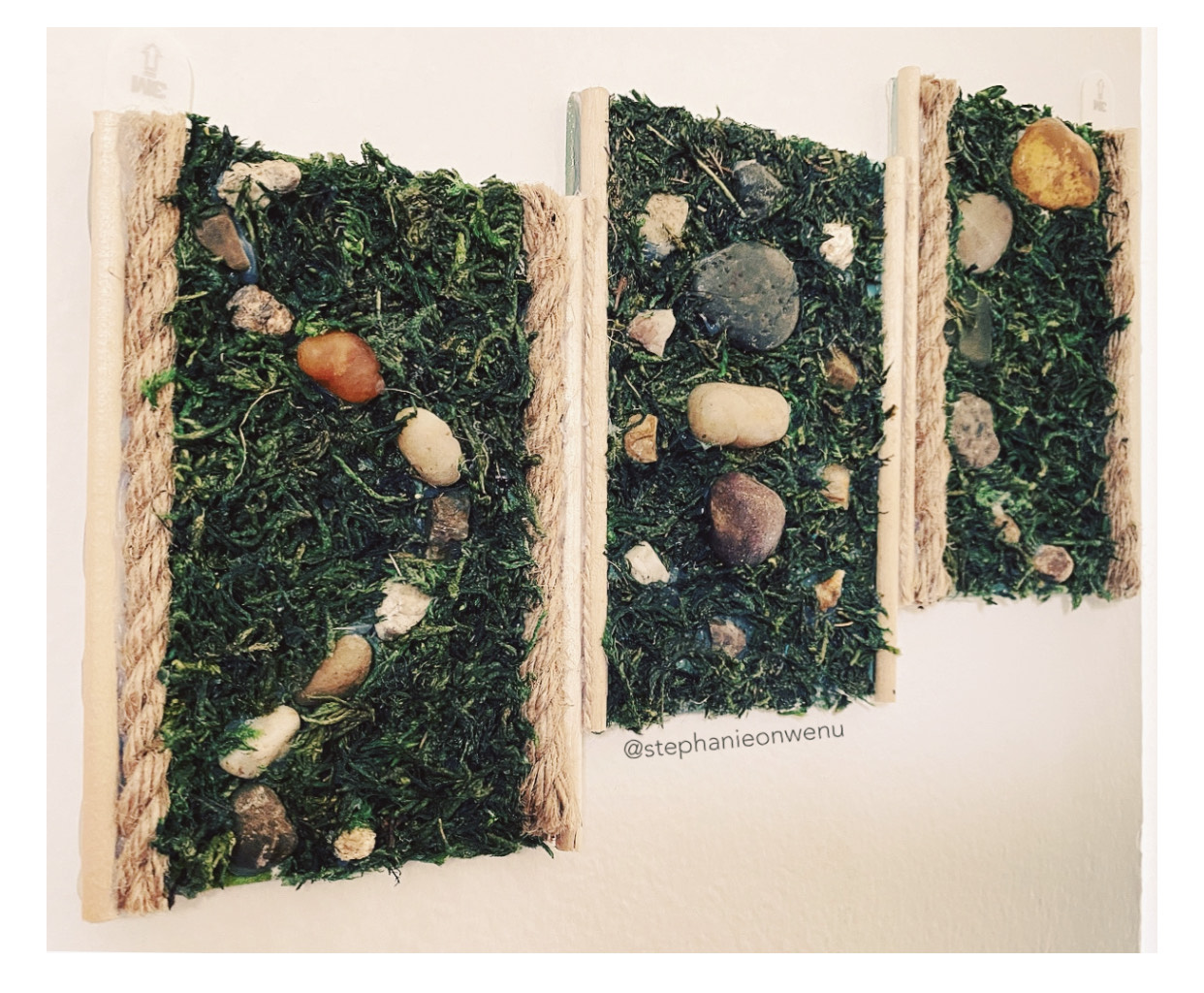
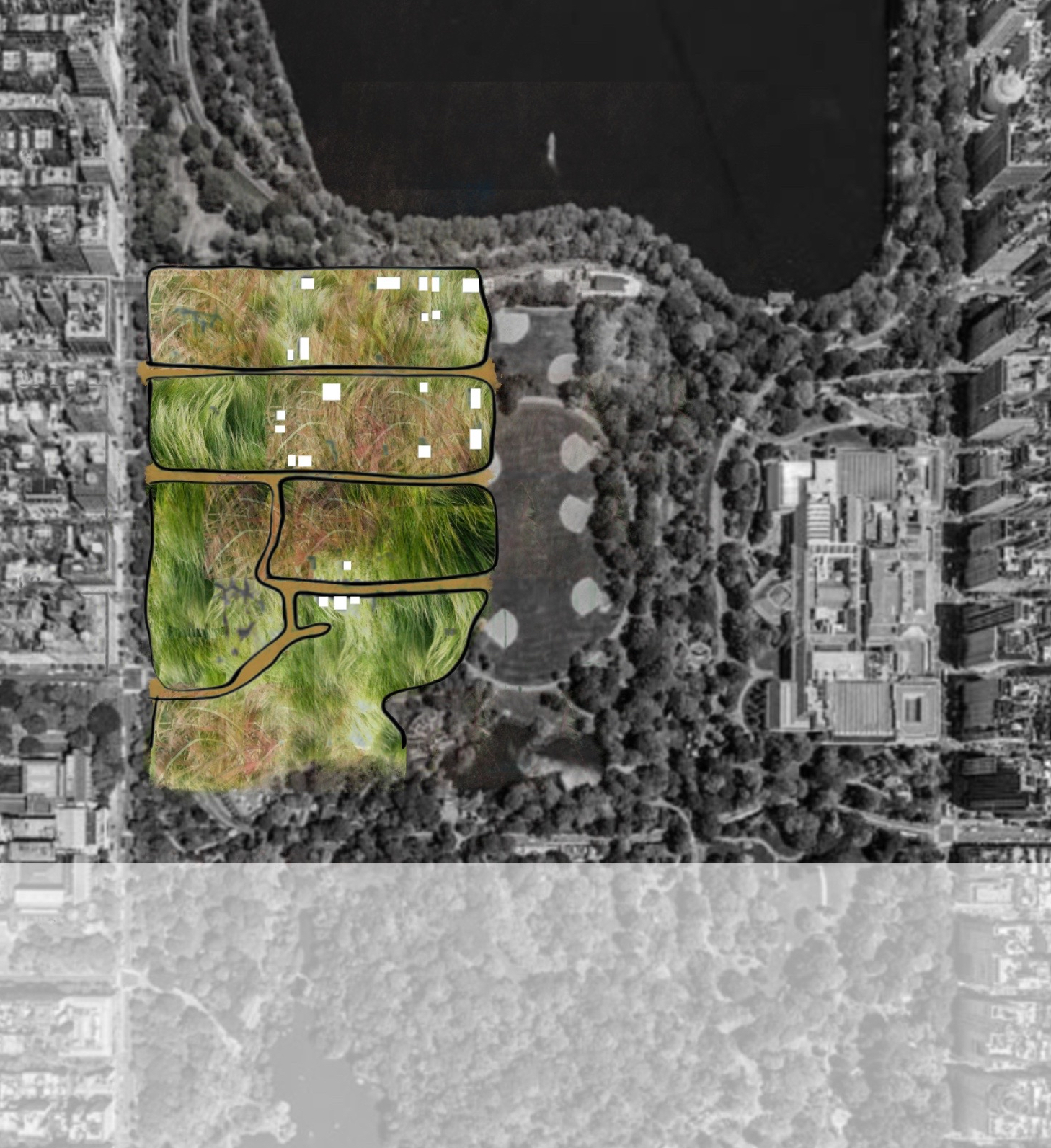
Design is a powerful tool, and landscape architecture has the power to make a difference, whether it’s preserving the stories and dignity of those who have come before us, or making better decisions moving forward. I hope this post, the conversation on Seneca Village, or the Ideas Pinup has ignited your interest in beginning and continuing this discussion, and similar discussions, with your designer colleagues and friends. If you are within academia, I encourage you, if you are not already, to begin these conversations in classrooms and studios, teach everything about Central Park, not just design ideologies. Tell the entire story, not just the pretty parts.
*In collaboration with Land8, we will be hosting an online call to provide a platform for the designers to elaborate on their ideas (like a pinup!) – VIEW RECORDING >
**With expressed interest, the Ideas Pinup Seneca Village is now open indefinitely! Please send your ideas whenever you find inspiration, and they will be added to the permanent gallery that I hope will continue to be a starting point of conversations in our classrooms, offices, and discussions
ASLA 2019: A Celebration of Authenticity, A Reminder of Harmony
The ASLA Conference on Landscape Architecture often feels like homecoming. Running around with 6,000-some of your colleagues, friends old and new, it’s almost impossible not to feel more educated, inspired, excited, and empowered. This year we celebrated, discussed, and challenged landscape architecture – how we perceive it, shape it, and share it – in sunny San Diego in November. With over 120 education opportunities, 14 special events, and 350 exhibitors gathered in concert, there is always something to do, something to see, something to learn, and someone to meet.
With a wide range of topics varying from sustainable materials, BIM (Building Information Modeling), extending to identity and culture in our practice, this year’s conference felt especially powerful, timely, and inspirational. Given we live in the challenging, yet hopeful crossroad of cultural, social, ecological, and environmental climate that we do, there has never been a better time to be a landscape architect, loud and proud.
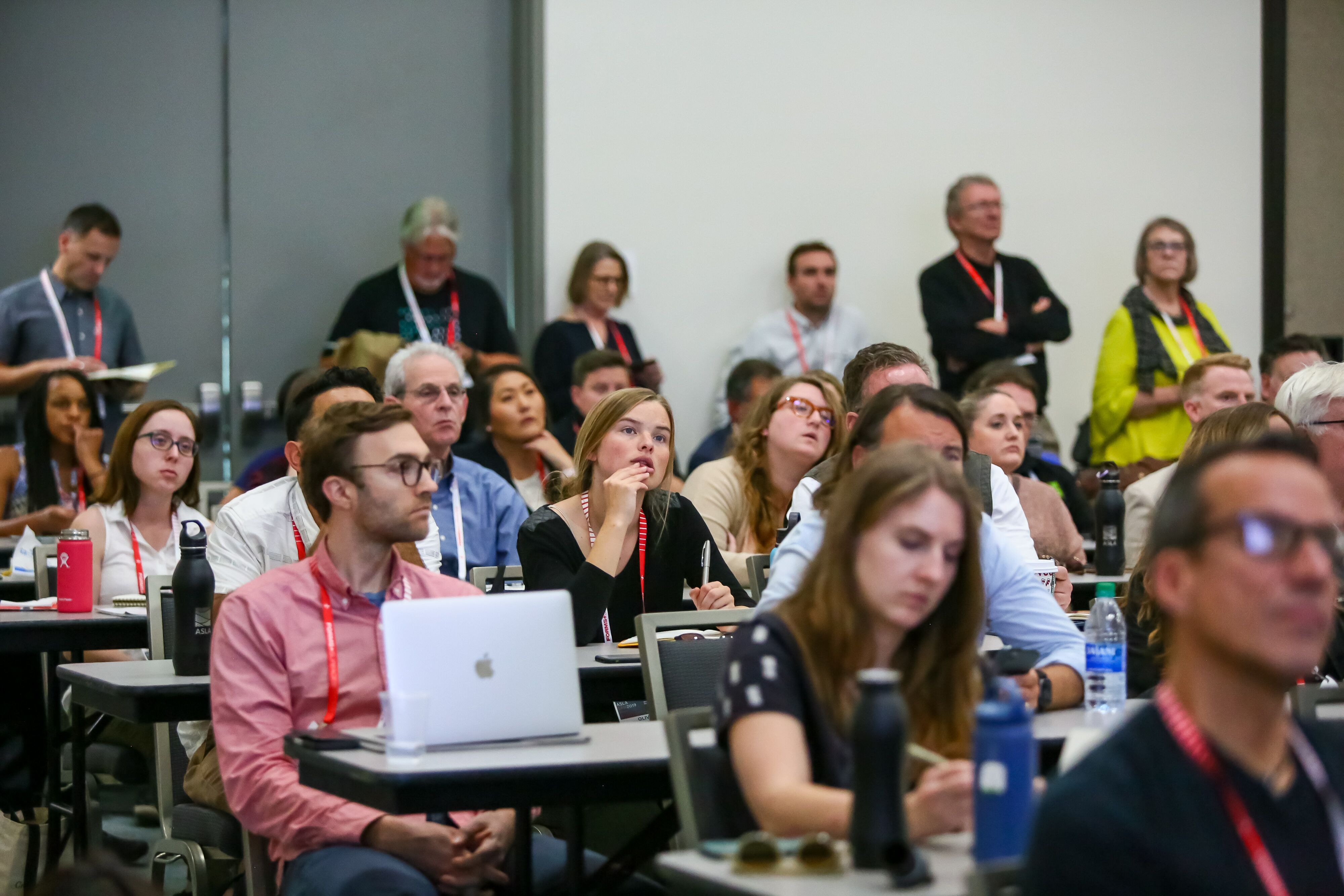
ASLA Conference on Landscape Architecture 2019; Photo: EPNAC
This year, the topics and discussions were diverse and inclusive. They were a celebration of our individual stories that connects us to our surroundings and enables us to create places from just being spaces. Be it an early session in BIM, an incredibly powerful and hilarious talk by the former administrator of U.S. Environmental Protection Agency (EPA), or a full house of powerhouse women cheering each other on, the excitement, passion, frustration, energy, and overall drive were present. Most importantly, between conceptual dreams and detailed drawings, authenticity, point of view, identity, and culture were celebrated. With climate change and diversity being at the core of most conversations – main or sideline – the spirit of our profession was lifted as one of the significant ways to contribute to positive change in our very fast paced world. The changing climate of our time isn’t just about the environment anymore. Our women, persons of color, and queer colleagues are stepping into leadership roles, which are reshaping our field to be more diverse. I had the opportunity to attend 13 sessions, and the connecting threads between the dots were the power of authenticity of our stories and the harmony of us as a community of designers and storytellers. Here are some of the highlights:
Our Changing Climate: Opening General Session
Gina McCarthy, the former EPA administrator, woke us up with her powerful, hilarious, and engaging talk on why our world’s changing climate is beyond an environmental and political issue – it’s a public health issue. She stressed the fact that the challenges coming from the changing climate are silently and quickly taking the lives of the most vulnerable and contributing to loss of communities, but we as landscape architects have been and should continue to forge forward on leading multidisciplinary design teams that think about sustainability and resiliency of communities. She went as far as to say that it is in fact the most public health international security issue of our time. Reminiscing of her unique accomplishments to date, she shared and called on us all to continue and strengthen our design with nature in mind. She stated, “We need you to design with nature, we need you to keep connecting those communities, and we need you to continue thinking about infrastructure. Climate change cannot be solved without you.”
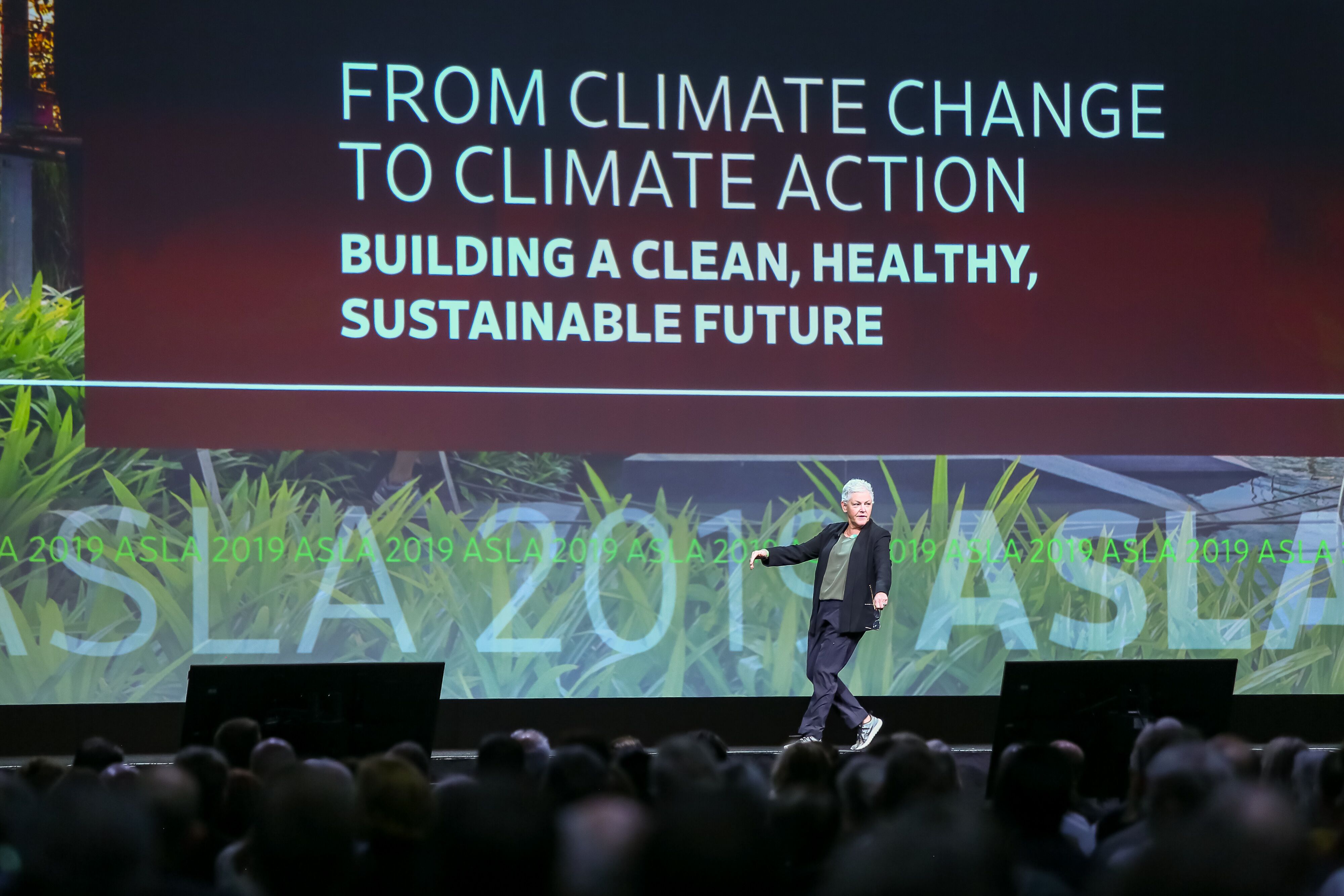
Gina McCarthy, Opening Session; Photo: EPNAC
I think it’s safe to say she made most of us feel like Captain Planet, determined to save the world one project at time. Learn more about her incredible career here.
On Authenticity and Its Power
Quite a few sessions focused on the power and importance of authenticity and its direct relation to designing a place that is unique, engaging, and true to its story. According to a few firm leaders, more clients are becoming more interested in the art of storytelling that landscape architects contribute to a project; therefore, whether a firm’s mission, a project’s opportunity, or curious research question, we have a unique opportunity to be the voice of those who may not have any or may no longer be amongst us.
In an unforgettable session entitled “Jumping off the Deep End: Strength of Diversity in Building a Practice” Walter Hood, Mikyoung Kim, and Michelle Delk shared their personal stories about finding their paths to landscape architecture at different stages of their lives. Starting from the beginning of their careers, they gave us examples of their own challenges and opportunities as they created practices that are authentic and with a message. They stressed the importance of being one’s true self in a world and time, where our cities are becoming more diverse in terms of culture, identity, ethnic backgrounds, religion, and sexual orientation.
In “Finding Design: Case Studies in the Creative Process”, Kathryn Gustafson and Walter Hood shared their unique design process, working through challenges of the site and the surprising obstacles to create their unforgettable spaces. They spoke about the importance of truly learning and understanding the narrative whose stories we are trying to tell, whether it’s one person or an entire community, and using our skills as landscape architects to provide those narratives as places were people could experience the living histories.
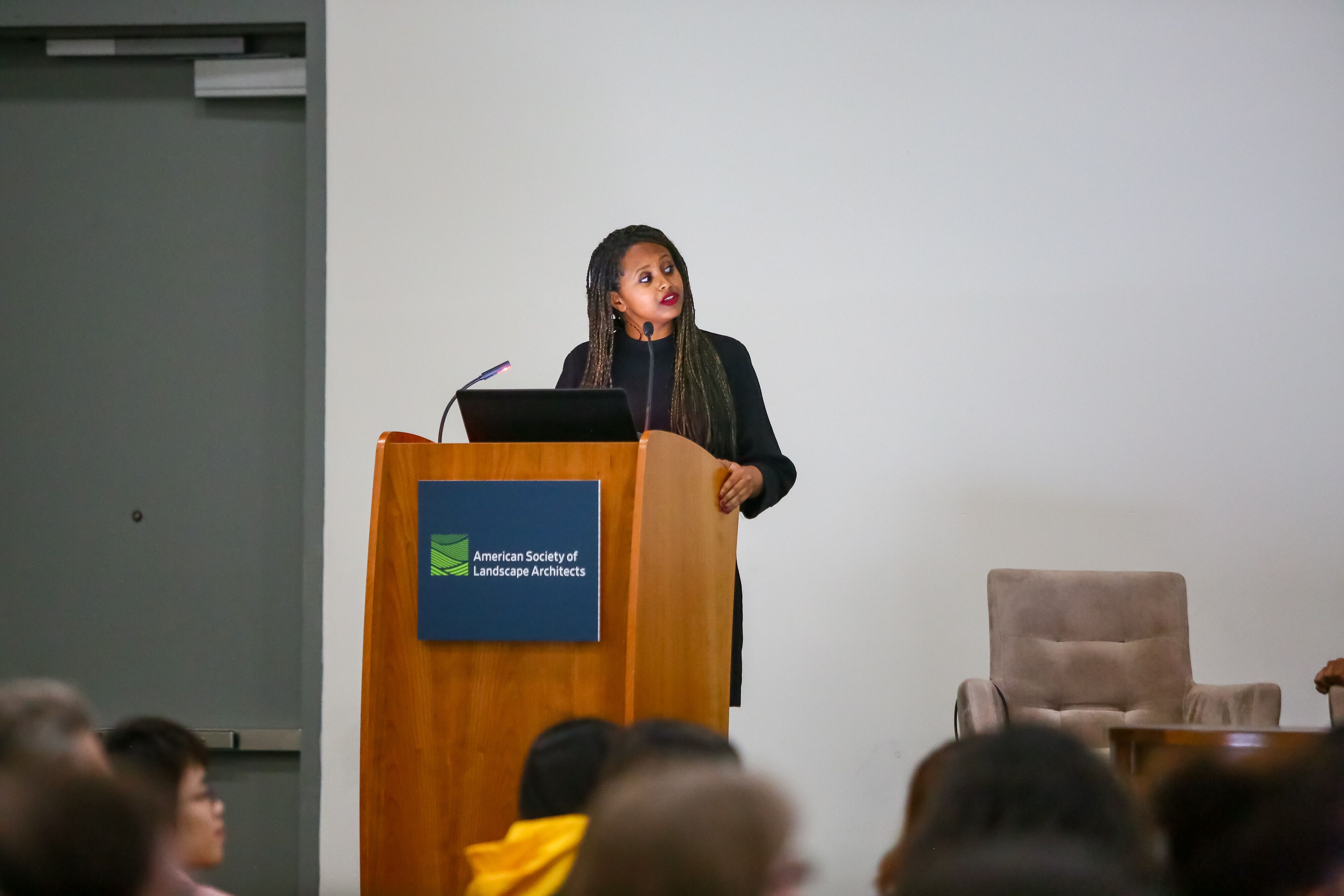
Sara Zewde; Photo: EPNAC
Nina Chase, Sara Zewde, and Falon Mihalic shared their unique approaches to creating their unconventional women-owned businesses in “The Business of Innovation: Three Case Studies in Unconventional Practice”. At standing-room-only capacity, they each candidly spoke about starting their firms by telling stories that were true to them through design. Focusing on their mission, vision, and precision, they gave examples of engagement with their firms’ hometown communities in ways that are memorable, significant, and impactful. Chase brings to life their ideas through temporary placemaking of actual designs to come. Using duct tape and milk crates, Merritt Chase created a temporary installation of their Birch Street Plaza to engage the community and received feedback. Zewde, truly skilled in community engagement and empowerment, brings communities together by active listening, welcoming everyone with open arms, and block parties. Truly believing that everyone has a story to share, Studio Zewde is paving new ways to tell everyday narratives through powerful design, memorable spaces, and details that actually matter to those who use their spaces daily, serving as a reminder that they matter. Mihalic beams of energy and happiness through personally (literally physically) hand-making art pieces that she uses on her projects. Falon Mihalic is using their power of creativity to forge ahead in creating spaces that matter through art.
Student Climate Crisis Forum
This year, a number of students wrote a letter to Shawn Kelly and the ASLA leadership expressing serious concerns and demanding strength of actions, “As design students deeply invested in the future of the world’s landscapes and their ability to sustain life, we have come together from across the United States to call on the ASLA to strengthen its commitment to addressing the most serious challenge of our times.” This resulted in the Student Climate Crisis Forum to be held by ASLA’s Climate Change Subcommittee, the Student Advisory Committee, and the Associate Advisory Committee. The conversation raised questions and concerns that were bold and powerful. Whether discussing how student groups are achieving climate-positive changes through campus pilot projects, proposing challenging the fossil fuels industry as a field, or focusing on vulnerable populations as we continue to design and build our environments, most everyone agreed that – regardless of what you call it – our climate is inevitably changing, and it will impact most of us in the coming years. We were reminded that whether it’s design or advocacy, as landscape architects we promised to keep the public’s health, safety, and welfare at the core of our practice and must continue to do so all the while keeping our changing climate in mind. Read their letter here.
Conversations, Continued
Some of the most memorable and candid conversations happen during the gatherings after a day filled with inspirational talks and exciting sessions. This year, the conversation on the student climate crisis forum continued at the Emerging Professionals Reception sponsored by Anova Furnishings, where students and emerging professionals also played an engaging game of ASLA-bingo.
This year, with more than 600 in attendance, we celebrated and recognized the LAF (Landscape Architecture Foundation) class of 2019 in beautiful Balboa Park’s The Prado. The Annual Benefit, a truly remarkable event, helped raise $275,000, contributing to the fundamental works of the Foundation and continuing support for their renowned research, fellowship, and scholarship programs. Learn more about their efforts here.
Landscape Forms turned 50 years old! To celebrate in true San Diego fashion, we cheered to the next 50 years of the company’s future on a boat on the Pacific Ocean. Complete with jazz music, we were treated to a unique and stunning view of downtown San Diego.
Rumor has it that the Land8 Happy Hour is the party of the year! With humble beginnings some moons ago, this year we gathered to celebrate its 12th anniversary at Jolt’n Joe’s. Complete with photobooth, games, billiards, and live music, it truly is the ultimate party for landscape architects. [PHOTO BOOTH PICS]
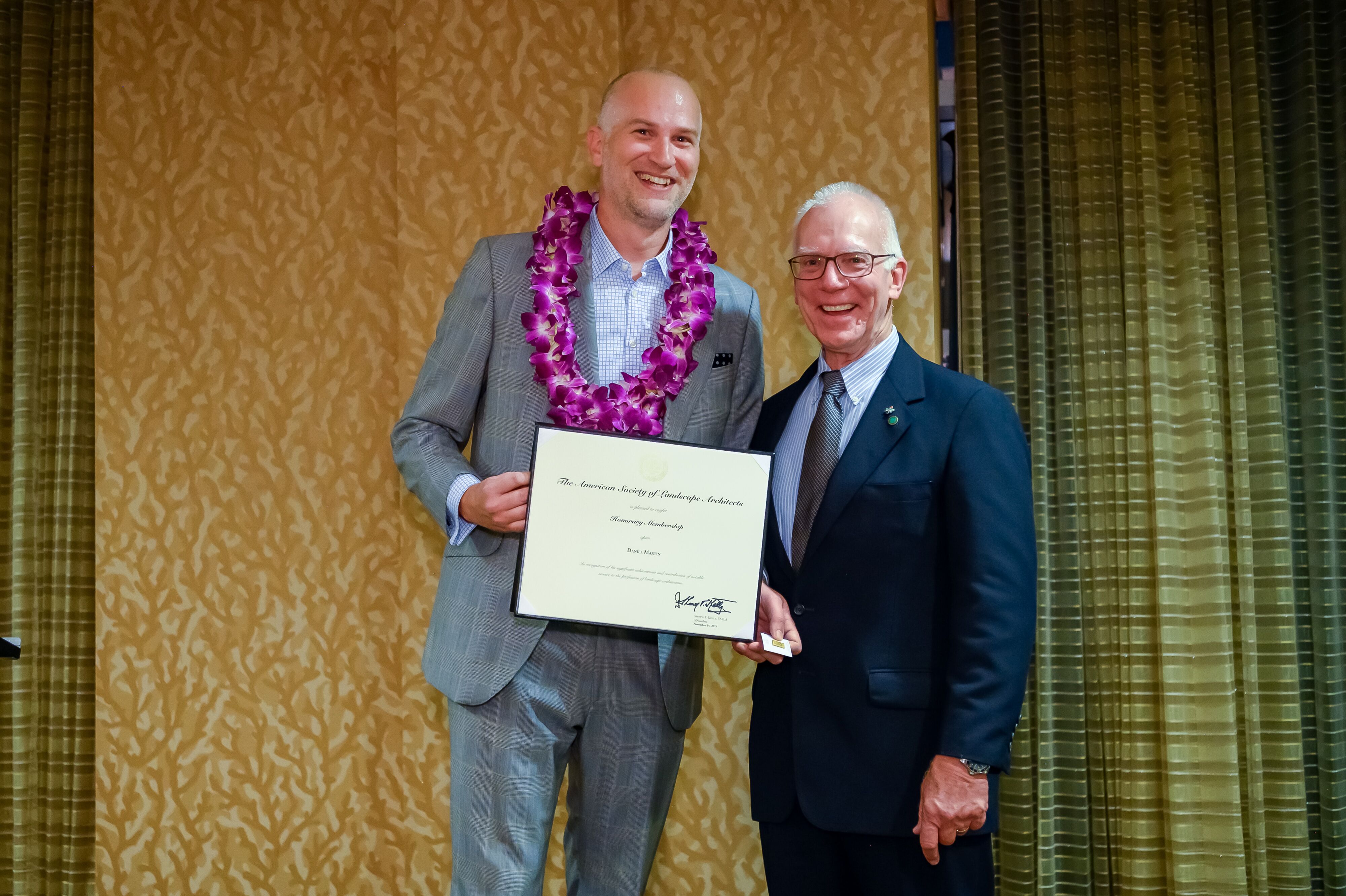
Congratulations to Land8 partner, Daniel Martin, who received honorary membership from ASLA; Photo: EPNAC
The Expo is one of the most fun and engaging ways to try the products that we use in our projects. Whether sitting on every bench you wish to specify, every paver texture you tried to understand on a website, or new and creative water and fire features, there are more than 350 exhibitors that are welcoming and more than willing to share new product information with you and answer any and all your questions. On the Expo floor is also where you find the college tailgate, which is the best way to connect with old professors and classmates. Other amazing opportunities on the Expo floor are the PPN sessions, student presentations, portfolio review, and of course the bookstore, where sometimes your favorite authors are present to sign your books and take a photo.
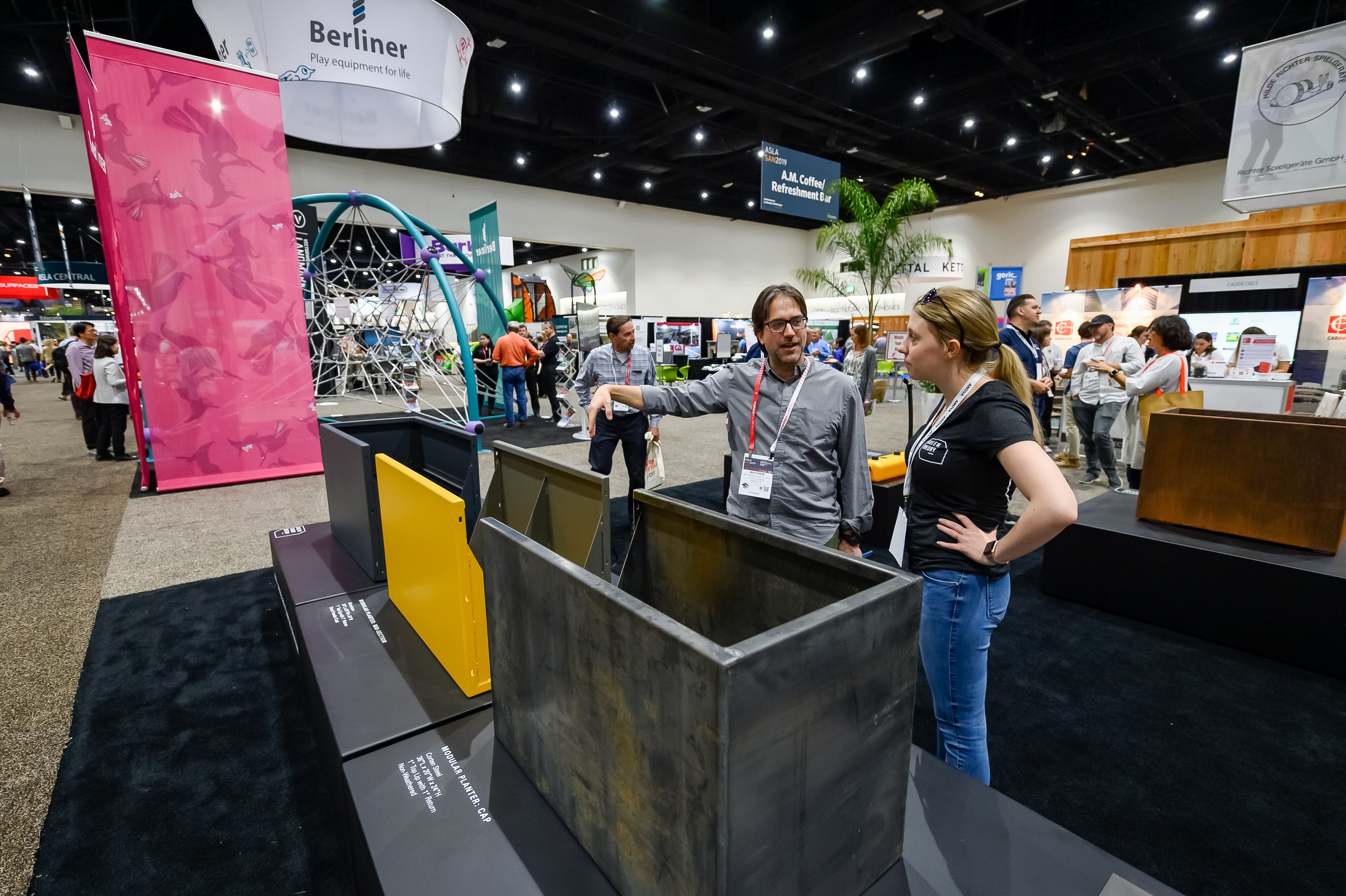
ASLA Expo 2019; Photo: EPNAC
Happy Ending
The ASLA Conference is personally and professionally important and memorable for many reasons. Beyond hearing some of our field leaders speak candidly about their own sources of inspiration and work, you hear how they also face similar challenges and their creative problem-solving. You have an opportunity to discuss issues and opportunities with a colleague facing the same challenges on the other side of the country and learn about how they went about solving it.
So, to wrap up the inspirational and motivating conference in San Diego, where excitement was flying around and determination seemed to get stronger with every session, I will leave you with the wise words of Gina McCarthy, “Don’t tell me we’ve given up the fight, we’ve only just begun.”
See you soon!
*I’d like to thank Land8 and LandDesign for their support and providing me with this incredible opportunity.





